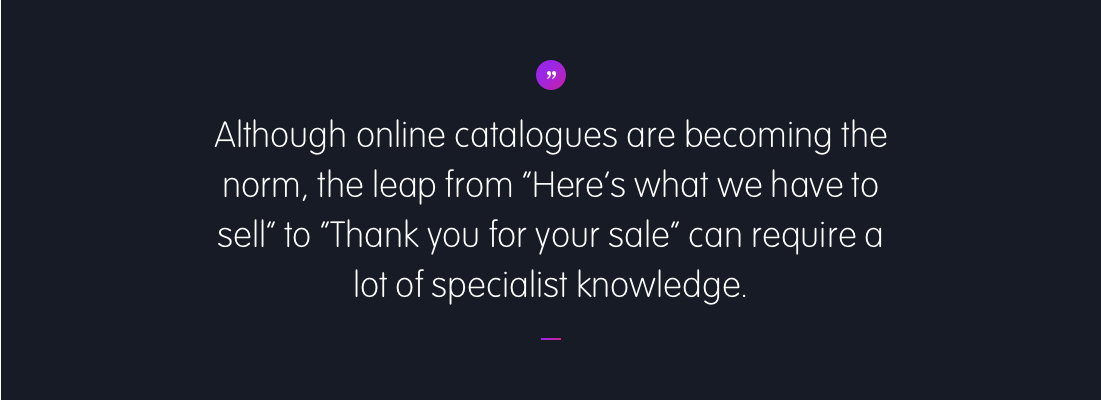We are lucky enough to have a number of retail businesses as clients.
And, while there are always some specialist factors involved in every industry and in every business, there are enough common factors for smart retailers to take notice of.
Consider the world of automotive spare parts.
While the size of the sale in spare parts can be small, a new cleaning cloth, for example, can be yours for a little over $5, the size of the total prize, in Australia, is $5.4billion.
And, of this $5.4billion market, there is an increasing shift to online purchasing.
Which should be ringing alarm bells for industries, like automotive, with only a small footprint online.
There are parallels with most other online retail markets.
Consider the book market.
In 2010, most book buyers stated they would rather buy a book in a book store.Last year, over 62% of all books were bought online. That number is increasing. Since 2015 the sale of online car parts has increased by over 3x. And, with major players like Amazon, all moving into the online space, the trend will continue.
There are a number of clear challenges for a bricks and mortar retailer moving online. Particularly in an industry as committed to bricks and mortar retailing as automotive spare parts.
The knowledge of the channel is lower.
Although online catalogues are becoming the norm, the leap from “Here’s what we have to sell” to “Thank you for your sale” can require a lot of specialist knowledge.
Catalogues drive business.
Not only do catalogues provide customers with an idea of what you have, they can, properly structured, be the powerhouse behind your SEO and content marketing strategies.
Can you have a smaller online catalogue? Will customers think, because your online offering is reduced, the in-store offering is similarly reduced?
Again, proper site and information architecture can help here.

Some items are best bought instore.
Oversize catalogue products are hard to ship. And expensive to ship. The great opportunity for bricks and mortar retailers is to provide multiple first-choice options for clients and not assume one channel should dominate or eclipse the other.
Different channels serve different functions. Bricks and mortar stores provide face-to-face advice, community and easy, immediate access for hard to ship items. Different platforms serve distinctly different functions. Mobiles are used for search. Desktops are used for purchase.
Sales attribution.
Online sales are often not attributed to specific franchises.If the online store takes customers away from a franchise store, who gets the bonus?
The challenge is to get the attribution for the sale agreed, so the sale is attributed via a store visit, to the right store, which keeps store managers onside.
Pricing can be confusing – especially for larger, national businesses.

Pricing fluctuations by location.
Geographic-based legacy pricing issues add another level of challenge to the online offer.
Geolocation can help.
Location-based sub-pages on the site allow clearer pricing for that area, but add size to the site – with corresponding speed issues.
Due to the pricing fluctuation, many retailers tend to overcomplicate online product promotion with multiple options and complicated matrices.
Legacy systems can be a drag
Many franchise operations have legacy systems from instore implementation which tie in everything from accounting to logistics to fulfilment and stock control.
Some of these systems are evolving to provide digital solutions for centralised systems. Some are not.

So, how does an ambitious bricks and mortar retailer make the move online with any confidence.
Start at the beginning.
Get technical.
Your site is the best weapon you have.
A bad site is the worst threat you can have.
Make sure your page speed is as fast as it can be.
Make sure you’re on the platforms your customers are on.
Do a 404 audit and fix any issues.
Avoid duplicate content – this cuts your discoverability significantly.
Make sure you index content correctly.
Run a monthly audit and log-file analysis to ensure you catch surprises before they shock you.
Look for irregular behaviour – spikes and troughs aren’t always good news or bad news – but make sure you know the difference.
Build trust in your brand.
When a big player like Amazon starts looking at your market, you need to understand how to beat them – and you can’t beat them at their game.
Build trust through your brand and encourage brand name searches.
Search, search, search.
Understand how search works.
Understand how customers search for products.
And find an enterprise SEO agency that understands how to make search work.
Understand the need to programmatically optimise product databases.
Discover the joy of programmatic SEO (brand – model – part).
People search for brands. And they search for product types.
Make sure your information architecture highlights the relevant keywords at the right time.
Use your keyword research to understand how your customers search for products, which tells you how to organise your site architecture.
Invest your money in how people search.
A recent study shows home pages only attract as much traffic as category and sub-category-pages.
Together, they attract over 80% of all traffic.
People will often search for “kinds of things” rather than specific products.
A well-structured site will be found when the information architecture matches the search behaviours.
Product pages are next at under 15%.
If people know what they’re looking for they want to go straight there.
Make it easy for them.

Content works
Once you know how people search, make sure you reflect that in your content.
What words or phrases are they looking for?
If it’s in your copy, the bots will find it.
Don’t overdo it though, if the bots find too much of a word, it can be worse than not finding the word at all.
Aim for about 150 words at most.
It makes the piece look easy enough to read, but it’s long enough to add convincing reasons why the customer should buy from you.
People search by topic and category.
Avoid cutting and pasting what the manufacturers send you.
They’ll probably be using it on their own site.
At best, your search then goes to their site.
At worst, it puts you on Google’s black list.
Take what they give you and pay a writer to re-write it.
Create content that works by topic and category.
And don’t just put a picture there.
Put a lot of pictures and make sure each one is tagged, is relevant and the tag complies with search behaviour.
Optimise, optimise, optimise.
Invest in a long tail strategy.
Optimise the full funnel (category, sub category, brands they stock, individual product SKU’s).
Do your keyword research.
Understand the intent of any keywords you choose.
Understand the context of any keywords you choose.
Pick relevant keywords for every transactional page on your site.
Set realistic KPIs – use your present average monthly figures as an initial barometer – and build from there.
Prioritise keywords that flag high purchase potential.
Optimise your meta-descriptions.
Include selling propositions and value propositions in your meta-descriptions.
Make each meta-description unique.
Optimise your tags.
Understand the intent of the search and reflect basic behaviours in your tags.

Build your knowledge.
Track your successes and your failures.
Understand your click through rates.
Improve on those.
Don’t look to industry averages – these will vary enormously based on region and time of purchase and user behaviour.
Look back over your own data.
Steal from the competition.
Do your research and find out what keywords and pages your competitors are ranking for.
If they’re missing from your site, put them in.
Don’t let your competitor steal business from you.
Automated automotive
Automated ecommerce can work.
It’s not a golden bullet, and it’s certainly not a set-and-forget thing.
But it works for every other category.
It can work for automotive spares.
Develop a strategy
Don’t just build it and hope people will come.
The great thing about online retail, and search, is how closely aligned they are.
Use data to forecast traffic and expected revenue
- Call someone who knows what they’re doing.
- Give them a clear brief.
- Set clear objectives.
- Hold them to their promises.
Contact Shout here.
